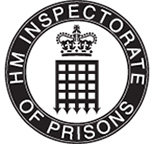Good practice
Good practice is an aspect of performance upon which the Inspectorate not only comments favourably, but considers reflects a manner of handling work developed in one organisational unit that, with appropriate adaptations to local needs, might warrant being commended as national practice.
We have extracted examples of good practice from their original context to express them in a more general form that will help you adapt them to your own particular needs. The examples are grouped in themes, and both the name of the theme and the name of the good practice example are chosen to capture their essence as descriptively as possible.
Each example describes the context it is relevant to, and gives problem/solution pairs. The original description from the report and a link to that report give you some idea of what caused us to notice this in the first place, but we hope that you will use this as inspiration to help make it your own.
Examples of good practice
Capturing information
- Test submitted police files against a checklist before reviewing interviews
- Use MG3 and/or form attached to disc for feedback on interview quality
- Label DVDs directly with all relevant information
Working with victims and witnesses
- Live links for remote victims and witnesses
- Only send full written Direct Communication with Victims (DCV) responses
Trial preparation
Compliance with judges’ orders
Capturing information
Name: Test submitted police files against a checklist before reviewing interviews
Context: Prior to charging appointment
Problem: Submitting files for review before they are ready or if they are deficient adds delay whilst additional material is sought
Solution: Only accept material that meets basic criteria set out in a checklist (and ensure it is more than an administrative compliance check) before submitting police files for review
Reference: Achieving Best Evidence in child sexual abuse cases: paragraph 7.16
7.16 The lawyers in an area visited are advised to do a ‘triage’ of the file before they start to review the ABE interviews, whereby files are checked and returned to police if deficient or prioritised for review where the file is sufficient. Another area moved from triage, which was no longer operable due to resources, to a checklist and only on its completion will a charging appointment be offered. Other areas have created similar checklists (good practice). Using a checklist to ensure files are ready before being submitted has led to some improvement; however, some lawyers felt that the checklist appeared to have been completed by an administrator undertaking the compliance checks. It became apparent the right work has not been done when the file was reviewed by the lawyer, adding further delay whilst additional material was sought.
Name: Use MG3 and/or form attached to disc for feedback on interview quality
Context: Pre-charge advice
Problem: The variety of feedback processes for driving up interview quality results in uncertainty of feedback effectiveness
Solution: Record the quality of the recorded interview in either a specific section of the MG3 and/or on a feedback form attached to the disc
Reference: Achieving Best Evidence in child sexual abuse cases: paragraph 7.22
7.22 All lawyers spoken to stated that they would record deficiencies in the ABE interviews in their pre-charge advice, but there was limited evidence of this on the MG3s reviewed. Lawyers also reported that any themes would be fed back through their line managers. The feedback process varied across the areas and it was not clear if the mechanism was effective in driving up the quality of the ABE interview. In one area we saw a feedback form to record quality attached to the disc; however, since centralisation of the CPS offices it had fallen out of use and the lawyers spoken to were not familiar with it. A copy of this form can be found at Annex C. We consider that, if used correctly and consistently, this would be good practice. An alternative mechanism for feedback to the officer in charge would be to ensure that the MG3 has a specific section to record the quality of the recorded interview.
Name: Label DVDs directly with all relevant information
Context: Case preparation and storage of evidence
Problem: DVDs lacking information on their contents are often misfiled because of this, leading to problems such as needing to request additional copies
Solution: Ensure DVDs have all relevant information on labels and cover, including a unique reference, and keep a record of where it is
Reference: Achieving Best Evidence in child sexual abuse cases: paragraph 8.6
8.6 Only a small number of DVDs viewed had labels which captured all the relevant information (good practice), many had no information on the cover linking it with a specific case file; this may be the cause of any misfiling leading to requests for additional copies. The CPS needs to ensure each copy of an ABE interview has a unique reference and a record is maintained of the location of each copy in order to make individuals accountable and address the problem of lost or misplaced DVDs. We deal with storage by the police at paragraph 5.1.
Working with victims and witnesses
Name: Live links for remote victims and witnesses
Context: Court facilities for victims and witnesses
Problem: Victims and witnesses who live in remote areas find it hard to attend court
Solution: “Bring” them to court virtually using live video links: Victim Support manages logistics and prosecutors can speak to witnesses before trial too
Reference: Victims and witnesses in Gwent and South Wales: good practice 1 & paragraph 5.17
GP 1 The use of live links into court provides a safe and convenient environment for victims and witnesses who live in remote areas (paragraph 5.17).
5.17 The Area supports a joint partnership facility whereby witnesses give their evidence via live link to the court from premises located remotely. This provides a safe environment and saves witnesses from long journeys to court. Victim Support manages the building, provides statements and administers oaths, while prosecutors speak with the witness prior to the start of the case over the video link if needed.
Name: Only send full written Direct Communication with Victims (DCV) responses
Context: Informing victims when a case no longer proceeds
Problem: Holding letters and formulaic responses don’t have desired effect
Solution: Only send a DCV full response letter with appropriately customised standard paragraphs using plain language free from legal jargon
Reference: Victims and witnesses in Gwent and South Wales: paragraph 4.4
4.4 The letters examined were, overall, of a satisfactory standard and complied in most respects with the national DCV guidance issued by the CPS. The majority set out clearly the reason for the decision to substantially alter or drop charges and most were in plain language and free from legal jargon. Whilst standard paragraphs were found in most, they were used appropriately and the text was otherwise tailored to the circumstances of the case, so most letters did not give the appearance of being formulaic. Each one examined was a full written response rather than a holding letter followed by a full response. We considered this good consistent practice, in accordance with guidelines and without adversely affecting timeliness.
Trial preparation
Name: Include request for missing material on police file quality feedback form
Context: Magistrates’ court trial preparation
Problem: Quality and timing of requested police files leaves little time for requesting missing material as well as sending the right message back to the police, but managing their impressions of their own performance is important in driving improvement
Solution: Use one form for two functions – giving feedback and requesting outstanding material
Reference: Thames Valley unit focussed: good practice 1 & paragraph 4.9
GP 1 The unit has devised an electronic feedback form for prosecutors to assess the quality of police files which doubles up as a means of requesting outstanding material from the police (paragraph 4.9).
4.9 Of the upgrade files submitted by the police, 92 per cent (11 of 12) were graded as sufficient to proceed by the reviewing lawyer. Inspectors used the reviewing lawyer’s own assessment of the upgrade files, which they submitted in a file quality feedback form to the police at the time of the full file review. The form includes requests for missing and/or additional items as well as providing the officer with general feedback on things like disclosure.
Name: Banish myths and stereotypes
Context: Case presentation and instructions to the advocate
Problem: Police officers may not be familiar with need to deal with myths and stereotypes, and counsel may forget
Solution: Address myths and stereotypes in the pre-charge advice as this is in turn sent to counsel as part of the brief; check this by requesting to see the opening note prepared by counsel before the case is opened to the jury
Reference: Achieving Best Evidence in child sexual abuse cases: paragraph 9.2
9.2 In one area the lawyers said that myths and stereotypes are addressed in the pre-charge advice because not all police officers will be experienced in such matters. In turn, this is sent to counsel as part of the brief. One lawyer spoke of requesting to see the opening note prepared by counsel (to open the case to the jury at the start of the trial) to ensure that myths and stereotypes are addressed when the case is opened to the jury (good practice).
Compliance with judges’ orders
Name: Reconcile recording of court orders between court and defence
Context: Recording of judges’ orders at Crown Court
Problem: Judges’ handwritten amendments to PCMH form aren’t communicated to both court and defence
Solution: Make local arrangements to ensure that there is a joint process to reconcile the recording of orders by the court and defence
Reference: Effectiveness of recording and monitoring judges’ orders audit report: paragraph 2.5
2.5 In some courts the judge signed a PCMH form ratifying the orders recorded on the form. We also saw examples of the PCMH form being altered by the judge to accurately reflect the intention of the order. CPS staff used this form to input the orders accurately onto CMS. This seems to be good common sense practice but was limited to a few courts rather than widespread. In the absence of an imminent electronic solution CPS managers need to make local arrangements to ensure that there is a joint process to reconcile the recording of orders by the court and defence.



